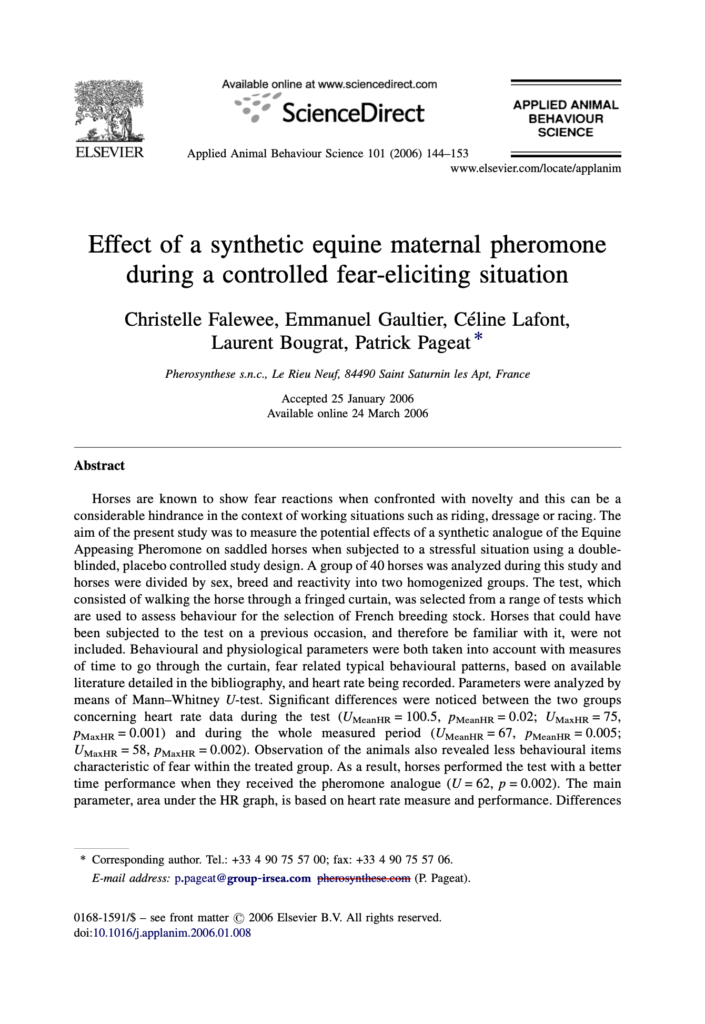Abstract:
Horses are known to show fear reactions when confronted with novelty and this can be a considerable hindrance in the context of working situations such as riding, dressage or racing. The aim of the present study was to measure the potential effects of a synthetic analogue of the Equine Appeasing Pheromone on saddled horses when subjected to a stressful situation using a double- blinded, placebo controlled study design. A group of 40 horses was analyzed during this study and horses were divided by sex, breed and reactivity into two homogenized groups. The test, which consisted of walking the horse through a fringed curtain, was selected from a range of tests which are used to assess behaviour for the selection of French breeding stock. Horses that could have been subjected to the test on a previous occasion, and therefore be familiar with it, were not included. Behavioural and physiological parameters were both taken into account with measures of time to go through the curtain, fear related typical behavioural patterns, based on available literature detailed in the bibliography, and heart rate being recorded. Parameters were analyzed by means of Mann–Whitney U-test. Significant differences were noticed between the two groups concerning heart rate data during the test (UMeanHR = 100.5, pMeanHR = 0.02; UMaxHR = 75, pMaxHR = 0.001) and during the whole measured period (UMeanHR = 67, pMeanHR = 0.005; UMaxHR = 58, pMaxHR = 0.002). Observation of the animals also revealed less behavioural items characteristic of fear within the treated group. As a result, horses performed the test with a better time performance when they received the pheromone analogue (U = 62, p = 0.002). The main parameter, area under the HR graph, is based on heart rate measure and performance. Differences noticed (U = 74, p = 0.002) for this parameter lead to the conclusion that horses who received EAP underwent less stress related consequences in terms of their cardiac physiology. As horses are subjected to a number of foreseeable stressful events this study suggests that the use of Equine Appeasing Pheromone could be a significant factor in improving the welfare of this species.
Auteur: Christelle Falewee, Emmanuel Gaultier, Céline Lafont, Laurent Bougrat, Patrick Pageat
Keywords: Horses, Behaviour, Fear, Pheromone, Heart rate, Performance
En savoir plus: https://www.sciencedirect.com/science/article/abs/pii/S0168159106000323

